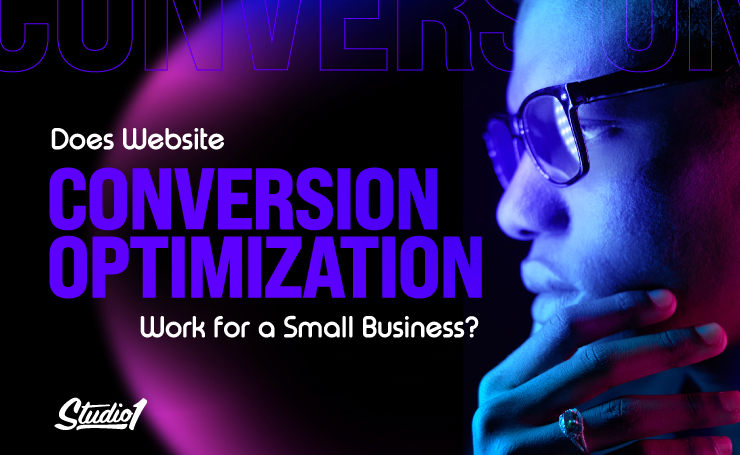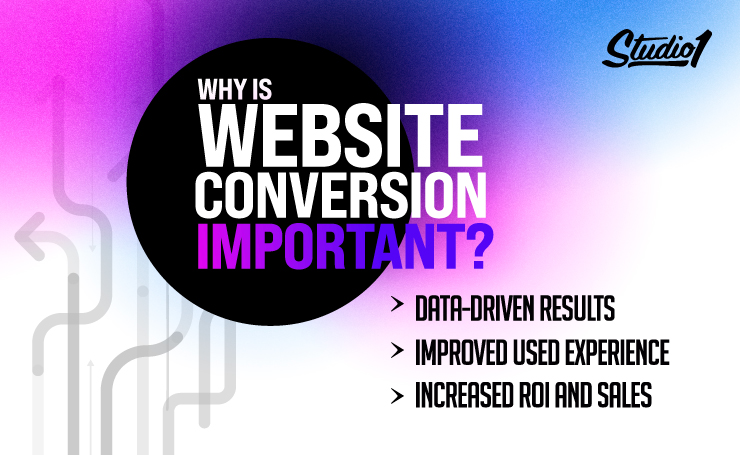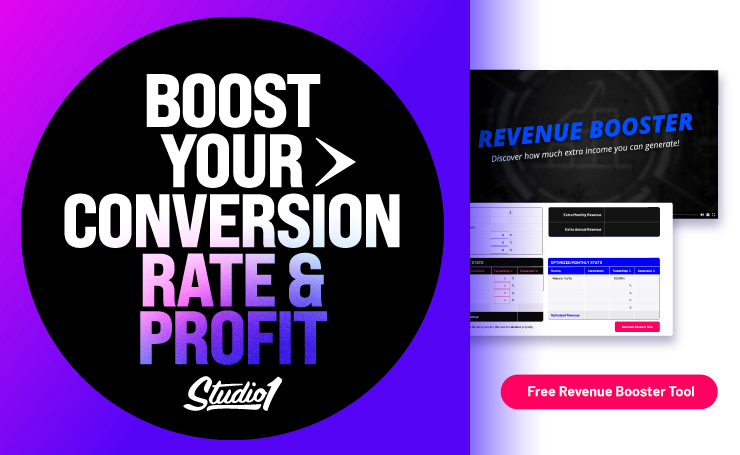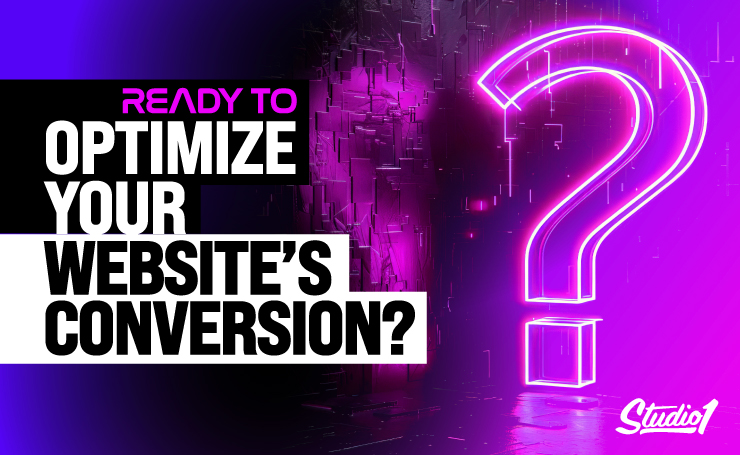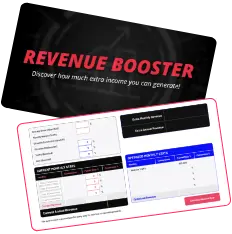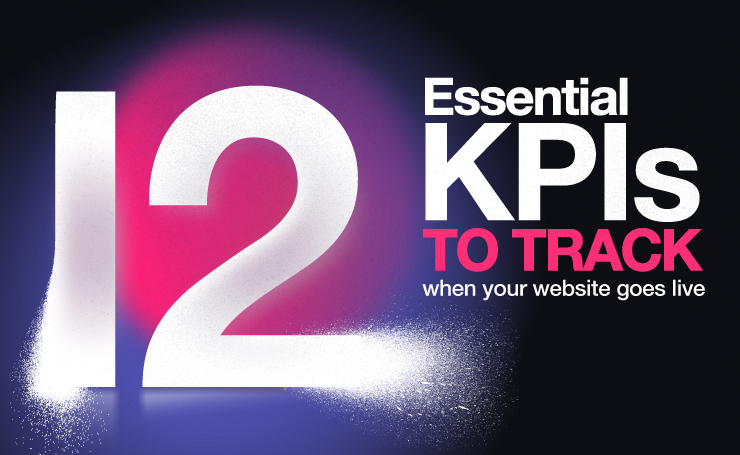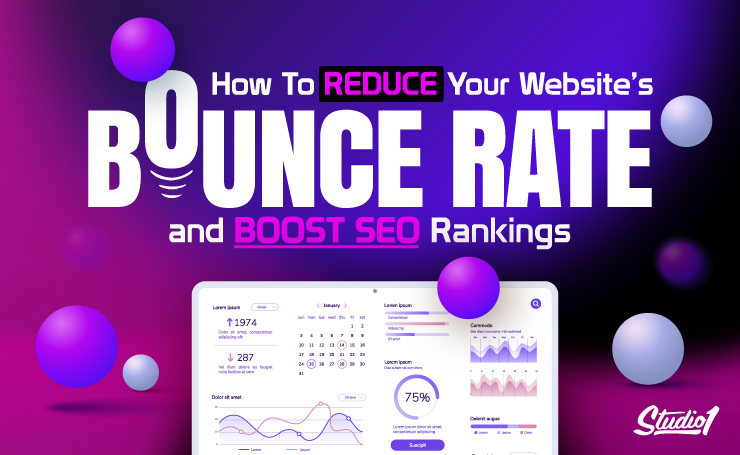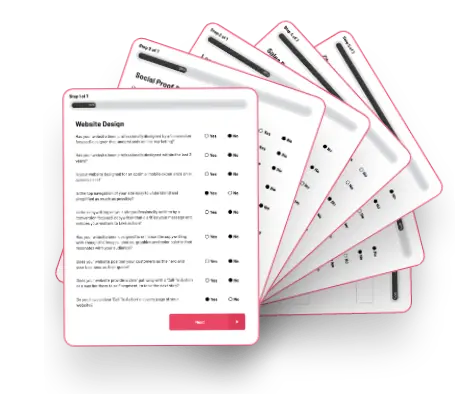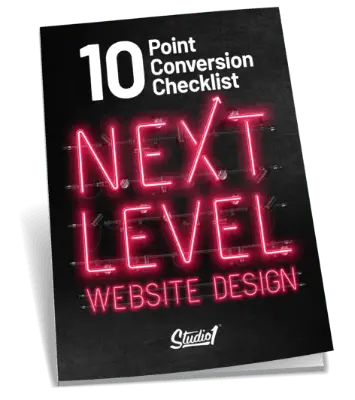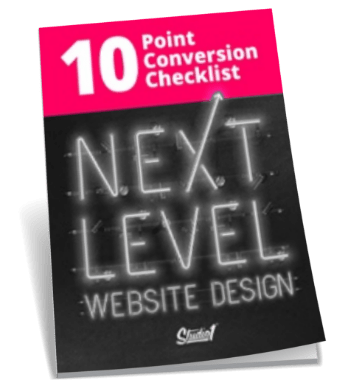Imagine owning a café on a busy street. Countless people walk by every day, many peeking through the windows. However, not everyone who looks inside decides to come in and buy a coffee.
To improve your sales, you start making some strategic changes. You place a chalkboard sign outside displaying your daily specials. You rearrange the seating to make the café more cozy and inviting and offer free samples of your best-selling pastries. You even train your staff to greet every passerby with a warm smile and a friendly hello.
These adjustments can significantly increase the number of people who come inside and make a purchase, based on the same amount of people passing by.
This is the essence of Conversion Rate Optimization (CRO): taking the same amount of visitors you already have, and influencing more of them to take action.
When it comes to your website for a small business, there are many things that you can change to boost your conversions, however, it’s hard to know where to start. First, let’s clarify what we’re talking about here…
What Is Website Conversion Rate Optimization?
Conversion Rate Optimization (CRO) is the process of boosting the percentage of visitors to your website to take a desired action, such as making a purchase, opting in for your free offer, filling out a form, registering for an event, getting a free trial, demo, booking a call, going to the next step in your funnel, or anything else you want people to do on your website that’s measurable.
Optimizing your website’s conversions involves identifying areas for improvement, creating a hypothesis, prioritizing each change based on statistical significance, designing a variation and implementing it to be split-tested against the original design (The control), then implementing the winner from the test, then moving on to the next split test.
One split test at a time is the best way to measure its performance effectively. After many split tests, you can significantly boost the overall conversion rates of your entire website.
How to Calculate Your Conversion Rate
To calculate the conversion rate, divide the number of conversions (such as purchases) by the total number of visitors to a website, then multiply by 100 to get the site-wide conversion percentage.
For example, if a website had 10,000 visitors and 300 made a purchase, the site-wide conversion rate would be 3%. This metric is essential for evaluating the effectiveness of campaigns and improving user experience to increase conversions.
If you have multiple steps that a visitor has to take to make a purchase, then you can measure a conversion rate for each step of the buyer’s journey, plus you can calculate a site-wide conversion rate.
What Conversion Optimization Isn’t
CRO isn’t just about making surface-level changes. It’s not about chasing trends without analyzing your data first. It’s not about guessing what to change, what’s wrong with your website, or why people aren’t converting. Instead, conversion rate optimization is a systematic process that involves split testing and improving page designs or strategies based on data.
What If You Don’t Optimize Your Conversions?
Failing to optimize your website for conversions can result in missed opportunities and lost sales. A poor user experience frustrates potential customers, and they are likely to turn to competitors, resulting in missed opportunities and increased acquisition costs.
As time goes on, new competitors will inevitably enter the market, often offering innovative solutions, more attractive deals or a more seamless experience. If your website isn’t keeping pace, you risk losing your hard-earned customers to these new alternatives.
You may also find that your audience’s needs and behavior may change over time. A website that remains unchanged will quickly become outdated, leaving you struggling to meet your customers’ expectations.
By continually optimizing, you ensure your website adapts to these changes, securing your place in the market and avoiding costly mistakes.
Why Is Conversion Optimization Important?
Understanding the critical role of conversion optimization can significantly impact your online presence – especially when done right.
Here are 6 conversion optimization benefits to your business:
1. You will better understand your customers.
You already know your customers — you know why they are on your website, what they want to buy, and how long they are spending on your website before they make a purchase. However, knowing your customers is different from understanding them. And here’s the thing about visitors, customers, and people in general… they change over time.
When you optimize your website, you will gather data about your visitors’ behavior and you can leverage this to make informed decisions. Conversion Optimization experts will track your potential customers’ data. This includes their behavior on your pages – finding out the answers to the following questions:
- What’s stopping people from making a purchase?
- Why are your visitors distracted from taking your desired action?
- Are your bounce rates high because your website is slow?
- Is there a barrier, or friction on some of the pages?
- Why are they leaving your shopping cart?
- Why are they not completing the checkout process?
- Are your visitors not engaged with your content anymore?
Truly understanding your visitors (& your potential customers) is the first benefit of conversion optimization.
2. You will be able to make decisions based on data.
You can rest assured that the decisions you are making for your business AND YOUR WEBSITE are data-driven instead of guesswork. In conversion optimization, you should never create recommendations based on best guesses.
3. You will make your customers’ experience better.
Optimizing your website makes it more than just user-friendly. In optimization, the aim is to leverage the website visitors’ experience to convert them to a paying customer — leading to more hot leads, increased sales, and greater customer satisfaction and loyalty.
Improving your website’s user experience has a domino effect. First, you make your visitors (your potential customers) subconsciously feel comfortable, safe, and happy.
Note: Experts will make your customers feel comfortable, safe, and happy on your website by strategically finding the best harmony of your website’s elements that speaks for your E.EA.T. (Experience, Expertise, Authority, Trustworthiness).
Second, your visitors may inevitably become your customers as they make it through the transaction smoothly. Then third, those customers will remember your website, your brand, and your business as a trusted source. And if they need anything else in the future, they will find their way back to you.
4. Your ROI increases.
Converting more visitors into customers boosts your sales without needing more traffic, reducing your customer acquisition costs and maximizing returns on your current marketing efforts.
It is not just about increasing your ROI, that’s just part of the domino effect.
The Average Order Value (AOV) and Customer Lifetime Value (CLV) are two of the discerned increases in optimization as well! And here’s why:
The AOV is used to measure the average amount a customer spends during each transaction and it helps in understanding the average spending behavior of customers. This knowledge equips you to strategize your prices and offers! How cool is that?
Meanwhile, the CLV estimates the profit generated by a customer over the entire course of their relationship or transactions with your business. You will know how much you can afford to spend on acquiring new customers. With these, you can forecast your revenue and formulate your retention strategies.
5. Your brand’s reputation will grow stronger.
Everything we do in conversion optimization leads to improving your digital presence and your reputation. Your website is the digital representative of your brand and business. With science and art, your digital presence is represented at its best — with your experience, expertise, authority, and trustworthiness.
6. You strengthen your competitive advantage.
Each of the 5 benefits outlined above will give you an advantage over your competition and be seen as an industry leader.
Check out our Revenue Booster Tool here to show you how much revenue you are potentially leaving on the table.
10 Strategies To Boost Your Conversions:
1. Understand Your Audience on a Deeper Level
Start by conducting thorough research on your target audience. Use tools such as Google Analytics or Microsoft Clarity to gain insights into user behavior, and demographics. These tools provide valuable data on how visitors interact with your website, helping you identify areas for improvement.
Using tracking software enables you to make informed decisions and stay competitive in your market.
Survey or interview your clients to find out who they are, where they hang out, what their challenges are, why they purchased from you, and what nearly stopped them.
Also, survey people on your email list or who follow you on social media to find out why they haven’t bought from you yet.
You are twice as likely to boost your results if you have a strategic approach based on studying your metrics and user behavior.
2. Personalize Your Content & Segment your Audience
If you have multiple target markets, have a separate landing page for each segment, and then tailor your content to meet the needs and interests of different visitor segments.
By leveraging data on user behavior and preferences, you can deliver more relevant and targeted messages. This approach makes visitors feel valued and understood.
That could mean having separate pages for each offer, location, or segment of your target market to meet their specific situation and challenges and have relevant social proof for each page.
Studio1Design.com had an 11% boost in leads after creating targeted landing pages, and 76% of those leads converted to sales because they came via a segmented landing page.
3. Reiterate Your Uniqueness & Reduce Risk
On your key sales pages, where visitors make purchasing decisions, clearly communicate what sets you apart from the competition.
This taps into what Robert Cialdini refers to as “Scarcity”—emphasizing the unique aspects of your offer that can’t be found elsewhere, making your solution truly one-of-a-kind.
To further build trust and reduce any hesitation, consider offering a free trial or a 100% money-back guarantee. These risk-reducing incentives can reassure potential customers that they have nothing to lose by giving your service a try.
After they’ve taken the plunge, reinforce their decision with a thank-you page that features a video. In the video, remind them why they’ve made the right choice, outline the key benefits, and provide clear next steps. This helps to prevent buyer’s remorse and reduce refund requests.
SaxSchoolOnline.com offers a free trial AND a 90-day 100% refund guarantee which has added over 1000 new students!
4. Leverage Social Proof
Use testimonials, reviews, and case studies to build trust. Trust indicators like customer feedback or industry recognition can lower barriers and boost conversions.
By highlighting positive experiences from other customers, you can reassure potential clients of the value and reliability of your products or services. This helps showcase your credibility and encourages more visitors to take action.
Rippaverse.com created an opt-in page for people to be notified when Eric July’s first comic book was released. On the page, we showcased his impact metrics including his 100 million YouTube views. He collected over 100,000 new leads to create demand. Then within the first week of releasing his first comic book, he sold over $3 million worth of comic books!
5. Remove Distractions & Friction
When people are on your website, and you want them to take a specific action, remove all distractions like other CTAs, top navigation, links to other pages throughout the copy, links to social media platforms, and any other confusing barriers or options..
Just give them one thing to do. Use the same CTA throughout the page. Also, add it to a sticky top nav bar so they can find it easily when they decide to take the next step.
Add your terms & privacy links on the page. When pressed, have them open up in a pop-up modal box on the same page, to prevent them from leaking off to other pages.
Your home page is the only page where you may consider having multiple CTAs that provide different pathways for visitors to take. You don’t know their intent, so give them clear pathways to decide which option best suits their needs.
WomensMeditationNetwork.com’s website has seen incredible growth in podcast downloads and memberships since removing a range of offers, and just focusing on one offer.”
6. Tweak Your Call-to-Action (CTA) Buttons
Clear, compelling CTAs are crucial as they are the one thing you want people to press to take them to the next step.
Make your CTAs stand out and ensure they are concise and have action-oriented and outcome-based wording. Also, consider having them high on your page to boost your conversions.
TeachThis.com.au, providing learning tools for students, increased their conversions by 21% by changing their CTA from ‘Buy Themes’ to ‘View Themes’. Hypothesis: This reduced the risk of having to commit until they were given more information on the next page.
7. Improve Your Web Forms
One way to optimize a form is to make it user-friendly by keeping it concise. Removing unnecessary form fields, as an example, can significantly boost your conversion rates.
However, there are cases where you don’t need to decrease the form fields so you won’t compromise the lead quality.
If you have a lot of questions, you can break them down into multi-step forms to boost your conversions – when done right.
TeachTraffic.com added a new opt-in page with a simple form that converted cold traffic at 44% generating 865 leads in the first six months. Then they had a second offer on the ‘thank you’ page which asked for more details.
8. Optimize the Mobile User Experience
Ensure your website is mobile-optimized. Given the rising number of mobile users, having a responsive layout is vital for attracting and converting mobile visitors.
A mobile-optimized website improves accessibility and navigation on smaller screens. This enhances user experience, leading to increased engagement.
StoreMoreHull.co.uk’s Facebook advertising firm said they exceeded every other account they have in terms of conversions from mobile, and they look after over 100 different self-storage facilities!
9. Improve Page Load Speed
Faster page loading reduces bounce rates. On the other hand, Kissmetrics reports that 40% of visitors abandon a website that takes more than 3 seconds to load.5
Ensuring your website loads quickly keeps visitors engaged and improves their overall experience. This can lead to higher conversion rates and better user retention.
Renault, a French multinational automobile manufacturer, increased their conversion by 13% and decreased their bounce rate by 14% with just a one-second improvement in their load speed.
10. Redesign Your Entire Website
It may be a waste of time trying to optimize your conversions on a website that is outdated, has poorly designed pages throughout, or has no strategies for warming up cold visitors, and if it is not converting as well as you hoped.
If that sounds familiar, you are better off completely starting again with a new conversion-focused website design that’s well thought out to appeal to your target market, positions your brand as a trusted authority and has strategies built in to warm up your cold visitors.
By starting with a new conversion-focused design, you will be in a much stronger position to make small changes to further optimize your website.
After launching their redesigned, conversion-focused PilatesJustForYou.com website, they saw remarkable results within just 6 months. Their business turnover increased by 30%, and they added 26 new clients to their Pilates studio sessions.
If you’re driven to achieve similar results, consider conducting your own tests.
Here’s our 10-point conversion optimization action plan to guide you through the process:
Your Conversion Optimization Action Plan
This is your step-by-step walkthrough for a successful conversion optimization.
Goal Setting
Identify your problems then establish your realistic goals. Set your expectations at the right level and make sure that you align your optimization strategy with your goals.
Data Tracking Setup
You will need data. Here are Studio1’s favorite data tracking tools for website performance: heatmaps, and screen recording, Google Analytics 4, Google Tag Manager, Hotjar, Lucky Orange, and Microsoft Clarity. Make sure that the tools are set up correctly so that you will be tracking accurate data.
Pre-assessment
Test all of the most important pages and funnel steps on your website and don’t forget about the buttons and hypertexts. Test for any friction or barriers you may encounter. Make use of tools such as GTMetrics or PageSpeed Insights to see how your website loads in different browsers, operating systems, and devices. These tools provide scores and grades for website performance.
Record Keeping
Take notes and document the necessary metrics. At this stage, you should have all of the necessary metrics aligned with the goals you have in number 1. Avoid documenting all numbers as it may leave you confused. Document only the necessary ones.
Data Analysis
From the data tracking tools you have set up, analyze your data and then systematically segment your findings in a way that it will be useful in formulating your strategy or strategies. Select your valuable insights.
Also, make sure you have a significant amount of data to analyze. We run our data tracking tools for at least two weeks for data collection.
Strategy Formulation
This takes some time as you need to go over your records from user testing, data analytics, heatmaps, and recordings.
Never jump to creating your strategy without analyzing your data. A pro tip would be to prioritize changes.
This could differ depending on the nature of your business so you need a careful assessment of your approach before implementing anything. An experienced conversion optimization expert can be invaluable at this stage.
Their experience with similar projects allows them to provide insights into what strategies have proven most effective in the past, as well as which approaches to avoid. This guidance can help you refine your strategy and focus on changes most likely to yield positive results.
Design and Development
Once you have your assessed strategy, it’s time to design and implement. Communicate with your designers and developers on your strategy. Different businesses should have different approaches for conversion optimization, there is no one-size-fits-all approach!
A business may need another version of a landing page to test. Another business may need to offer a value proposition on the homepage. Another may need to revise their cart and checkout pages. Clearly communicate your approach with your design and development team.
Prioritize and Implement Split Tests
You may have several approaches in mind but you need to prioritize these approaches. Having all approaches be implemented at once, may ruin your optimization and you may not know which worked best or worst.
Decide with an expert which changes you want to test first. If the approach does not win, test another one until you have a winner. If you are creating a new landing page, split-test it against the current version (your control page). Make sure that your winner is statistically significant. Compare your before-and-after results then make your data-driven decision.
Bonus Things To Consider Testing
There are so many other things to consider for a high-converting website, including: Limiting top navigation options or making it more logical, making your website easy to read, and staying true to your brand’s voice, adding trust-building elements, awards, as seen on logos, adding more clarity, persuasive copywriting, emphasizing benefits, removing leakage points, adding infographics, adding explainer videos & SPIN selling video, professional photos & design, warranties, adding various lead magnets, adding urgency, reducing pricing options, having 3 payment options, adding a recurring option, adding up-sells and down sells, abandon cart sequence, adding an email nurture campaign, adding filtering to products or services, reducing or adding funnel steps and offers, adding pre-sale pages, changing the page length, moving elements up the page, adding a phone number, speeding up your website, easier search functionality, etc.
Honestly, the list goes on and on, but take a deep breath… and relax, because you don’t need to do everything, especially not all at once!
Summary & Conclusion
Conversion Rate Optimization is fundamentally about respecting your visitors’ time and intent. It requires a deep understanding of your audience’s needs and behaviors to create a smooth experience that motivates them to take action.
It’s about delivering value and building trust through every interaction on your business website.
By prioritizing user experience and continually refining your website based on data and feedback, you can turn more visitors into hot leads and sales!
Every business has three levers to pull that can significantly increase your sales…
- Increasing your average order value
- Drive more traffic to your website
- Boost Your Website Conversions
We have created this free ‘Revenue Booster’ tool to show you how much extra income you can generate each month, by boosting your percentage on any or all three levers.
Ready to Optimize Your Website’s Conversion?
If you would like a hand with boosting your website’s conversions, as we did with most of the case studies mentioned above, without paying a CRO agency tens of thousands each month, and…
If you’re an existing client of Studio1Design.com check out how Studio1’s Conversion Optimization Service can help boost your website’s results.
You can leverage our expertise after designing thousands of websites. Get powerful insights with the help of AI, personalized reports, and analysis, plus new designs for every A/B split test we can keep improving your website results, regardless of what challenges your business faces.
Here are a few more awesome results from our clients…
EffortlessSwimming.com’s new website has doubled its sales from a combination of the new website, new copy, and running new ads.
YoshaLawFirm.com’s traffic and inquiries are at all-time highs with 60 new inquiries in 3 Months. That’s a 6x on their previous website.
ThePropertyCouch.com.au has over 10 million podcast downloads and has collected over 50,000 new leads since we redesigned their home page.
If you would like similar results, check out Studio1’s Conversion Optimization Service and see if we’re a good fit for your small business.
